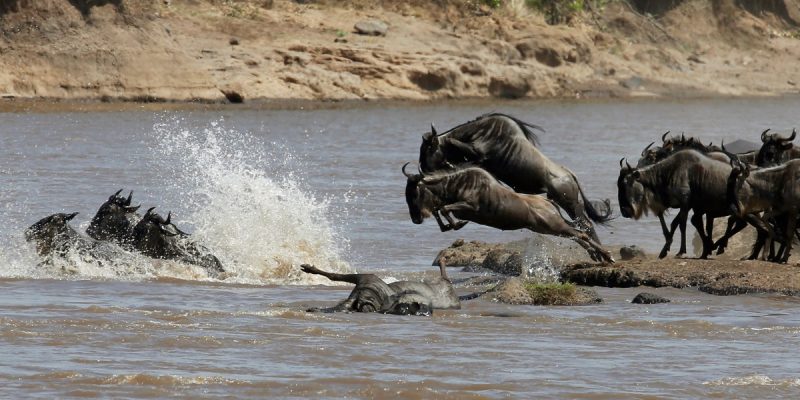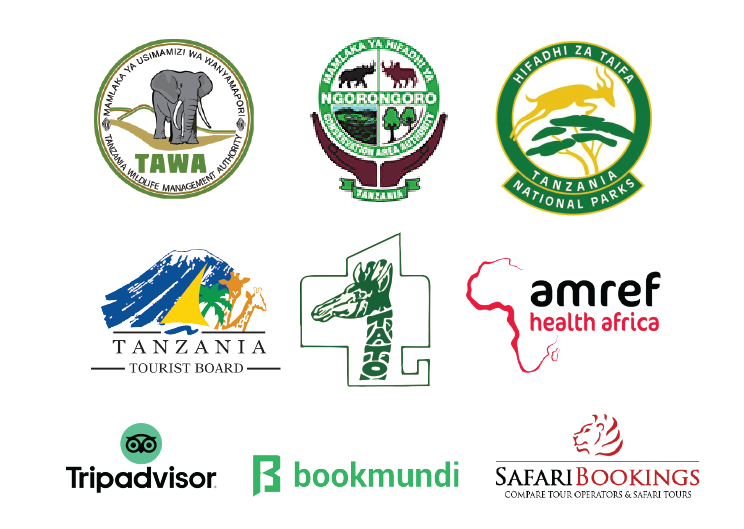the great migration
Babji Tours & Safaris Ltd
The Great Migration in the Serengeti
The continuous movement in a clockwise direction of millions of ungulates, predominantly wildebeest and zebras and lesser amounts of Thomson’s gazelles, Grant gazelles and Elands, through the greater Serengeti – Mara ecosystem in search of green pastures & water, is undoubtedly the greatest existing spectacle of its type in the world.
It is dictated by the local rainfall pattern. The Serengeti Migration follows a reasonably predictable annual cycle, though as with timing of the rainy season there is a fair amount of variation from one year to next.
Migration in brief:-
- March to June – Migration is on the Western Serengeti – Grumeti River Crossing
- Jul to September – Migration is in the Northern Serengeti- Mara River Crossing
- November to December – The migration is all scattered in the Central Serengeti – all animals concentrated in the central part. Likely to see many kills.
- December to February – Calving season
The major obstacle faced by the wildebeest during their migratory journey towards the north is what is known as
The Crossing at the Grumeti River through the western corridor occurs from June up to early July. Many animals die in the crossing, as some of them are eaten by the rivers’ ravenous and prolific population of outsized crocodiles. The first herds to cross are generally at a greater risk. It can take up to two weeks from when the first herd arrives the southern bank of the river for the actual crossing to begin, by when thousands of herds are congregated in the western corridor.
From July to October about half of them cross the Mara river in to Masai Mara national reserve ( Kenya) and the remainder are spread out through the Northern and Western Serengeti. By late October the herds have generally started to plod back southward to the Seronera plains to arrive in late November when the preparation for the Calving season begins.
The season of birth of the wildebeest calves is actually what is known as
Calving is actually the season of the birth of wildebeest calves. The Southeastern plain that stretches across Ngorongoro conservation area forms the main ungulate calving ground of the Serengeti. The herds typically disperse in to the plains during the short rains which fall between November and December before CALVING in January and staying put until the end of long rains generally in early May. The air during this months is full of new life and action and predators such as lions, leopards, cheetahs, carcals, servel cats and African wild cats together with the wild dogs and hyenas and of course the predators from the sky-vultures and eagles are in constant hunt to make a quick meal of the vulnerable calves. But an easy kill isn’t always guaranteed. Female wildebeest instinctively know to head to the short grass plains so that they can see approaching predators. There they form a barricade around birthing mothers to protect them and the young when they are the most vulnerable, during birth - ensuring the majority of the young survive.
It's during this time when the southern Serengeti and western Ngorongoro Crater host the highest concentration of predators in Africa at a given time. Almost about 8000 calves are born each day during the peak calving season from early January to late February.
From July to October about half of them cross the Mara river in to Masai Mara national reserve ( Kenya) and the remainder are spread out through the Northern and Western Serengeti. By late October the herds have generally started to plod back southward to the Seronera plains to arrive in late November when the preparation for the Calving season begins.





